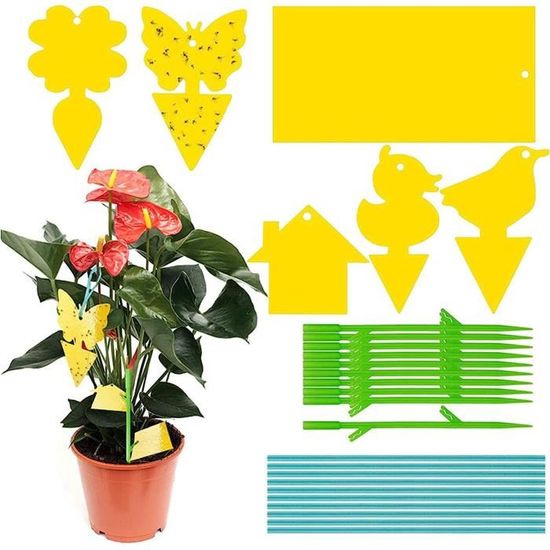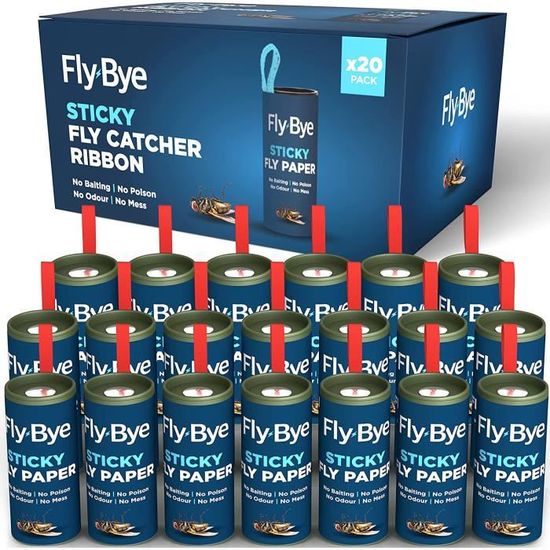DIY Fly Trap: Your Ultimate Guide To Making An Attrape Moucheron Maison
Have you ever wondered how to deal with those pesky flies buzzing around your home without spending a fortune on fancy gadgets? Well, you're not alone. Many people are turning to homemade solutions to keep their homes fly-free, and today we're diving deep into the world of DIY fly traps or as the French would say, "attrape moucheron maison." This article will be your go-to guide for creating effective, eco-friendly, and budget-friendly fly traps right in your own kitchen.
Flies are more than just annoying; they can also carry diseases and contaminate your food. But don't panic yet! With a little creativity and some basic household items, you can make your own fly trap and reclaim your space. Whether you're a seasoned DIY enthusiast or a complete beginner, this guide has got you covered. So, grab a cup of coffee, get comfy, and let's talk about how to say goodbye to flies for good.
Before we dive into the nitty-gritty details, it's important to note that homemade fly traps are not only cost-effective but also environmentally friendly. You won't have to worry about harsh chemicals or plastic waste. Plus, they're super easy to make, even if you're not the handiest person around. So, are you ready to become a fly-trapping pro? Let's get started!
Why Choose a Homemade Fly Trap?
First things first, why bother making a homemade fly trap when you can just buy one at the store? Well, there are plenty of reasons. For starters, store-bought traps can be expensive, and they often contain chemicals that aren't great for your health or the environment. Plus, who wants to contribute to more plastic waste? By making your own fly trap, you're taking a step towards a more sustainable lifestyle.
Another great reason to go the DIY route is that it's incredibly customizable. You can tailor your trap to your specific needs and preferences. For example, if you have pets or kids, you can make sure your trap is safe and non-toxic. And let's not forget the satisfaction of knowing you made something yourself. It's like a little victory every time you catch a fly!
Basic Materials for Your Attrape Moucheron Maison
Now that you're convinced to give homemade fly traps a try, let's talk about what you'll need. The beauty of DIY fly traps is that you probably already have most of the materials at home. Here's a quick list of the basics:
- A plastic bottle or jar
- Vinegar or sugar water
- Dish soap
- A knife or scissors
- Tape or glue (optional)
Of course, you can get creative and add your own touches, but these are the essentials. And don't worry if you don't have all of these items on hand; there are plenty of variations you can try depending on what you have available.
Step-by-Step Guide to Making Your DIY Fly Trap
Alright, let's get down to business. Here's a step-by-step guide to creating your very own attrape moucheron maison:
Step 1: Gather your materials. Make sure everything is clean and ready to go.
Step 2: Cut the top off your plastic bottle or jar. This will create the entry point for the flies.
Step 3: Mix your bait. A common recipe is a mixture of vinegar and dish soap, but you can also use sugar water or fruit juice. The key is to create a smell that attracts flies but also traps them.
Step 4: Place the top of the bottle upside down inside the bottom part. This creates a funnel that makes it easy for flies to get in but difficult to get out.
Step 5: Secure the top and bottom with tape or glue if necessary. You want to make sure it stays together and doesn't leak.
Step 6: Set your trap in a strategic location. Flies are attracted to food, garbage, and other smelly things, so place your trap near these areas.
Alternative Trap Ideas
If you're feeling adventurous, there are plenty of other trap designs you can try. Here are a few ideas:
- A bowl of soapy water with a drop of dish soap
- A jar with a paper funnel inside
- A ziplock bag filled with water and a bit of sugar
Each of these designs has its own advantages, so feel free to experiment and see what works best for you.
Common Mistakes to Avoid
While making a DIY fly trap is pretty straightforward, there are a few common mistakes you'll want to avoid:
- Not using enough bait. If your trap isn't attracting flies, you might need to increase the amount of bait or try a different recipe.
- Not securing the trap properly. If your trap leaks or falls apart, it won't be effective.
- Placing the trap in the wrong location. Make sure you put it where flies are most likely to gather.
By avoiding these pitfalls, you'll increase your chances of success and have a more effective trap.
Benefits of Using Natural Ingredients
One of the biggest advantages of homemade fly traps is the use of natural ingredients. Unlike commercial traps, which often contain harmful chemicals, DIY traps are safe for your family and pets. Plus, they're better for the environment. Here are a few benefits of using natural ingredients:
- Non-toxic and safe for kids and pets
- Biodegradable and environmentally friendly
- Cheaper than store-bought traps
And let's not forget the satisfaction of knowing exactly what's going into your trap. You can rest easy knowing that you're not exposing yourself or your loved ones to harmful chemicals.
How Effective Are Homemade Fly Traps?
Now, you might be wondering just how effective these homemade traps really are. The truth is, they can be incredibly effective if done correctly. Studies have shown that vinegar and dish soap, two common ingredients in DIY traps, are highly effective at attracting and trapping flies. In fact, some studies have found that homemade traps can be just as effective as commercial ones.
Of course, the effectiveness of your trap will depend on several factors, such as the location, the type of bait used, and the design of the trap. But with a little experimentation and tweaking, you can create a trap that works wonders for your home.
Tips for Maximizing Effectiveness
Here are a few tips for getting the most out of your homemade fly trap:
- Place multiple traps around your home for maximum coverage.
- Change the bait regularly to keep it fresh and enticing.
- Clean up any food or garbage that might attract flies to reduce their numbers.
By following these tips, you'll be well on your way to a fly-free home.
Environmental Impact of DIY Fly Traps
As we mentioned earlier, one of the biggest advantages of homemade fly traps is their environmental friendliness. By using materials you already have at home and avoiding harsh chemicals, you're reducing your carbon footprint and helping to protect the planet. But the benefits don't stop there. Here are a few more ways DIY traps are good for the environment:
- Reduces plastic waste by reusing old bottles and jars
- Minimizes the use of harmful pesticides and chemicals
- Encourages a more sustainable lifestyle
Every little bit helps, and by choosing to make your own fly trap, you're doing your part to protect the planet.
Conclusion and Call to Action
In conclusion, making your own attrape moucheron maison is a simple, effective, and eco-friendly way to deal with pesky flies. With just a few household items and a little creativity, you can create a trap that works just as well as anything you could buy at the store. Plus, you'll save money and reduce your environmental impact in the process.
So, what are you waiting for? Grab those materials and get trapping! And don't forget to share your experience with us in the comments below. We'd love to hear how your homemade fly trap turned out and any tips or tricks you discovered along the way. Happy trapping!
Table of Contents
- Why Choose a Homemade Fly Trap?
- Basic Materials for Your Attrape Moucheron Maison
- Step-by-Step Guide to Making Your DIY Fly Trap
- Alternative Trap Ideas
- Common Mistakes to Avoid
- Benefits of Using Natural Ingredients
- How Effective Are Homemade Fly Traps?
- Tips for Maximizing Effectiveness
- Environmental Impact of DIY Fly Traps
- Conclusion and Call to Action



Detail Author:
- Name : Suzanne Conn V
- Username : lockman.vergie
- Email : neichmann@gmail.com
- Birthdate : 1996-07-19
- Address : 815 Legros Mission Port Lysanneland, PA 08679-7818
- Phone : +17706588183
- Company : Weber and Sons
- Job : Business Operations Specialist
- Bio : Est totam similique aperiam labore eaque fugit quis. Omnis possimus repellendus eum sequi rerum. Cum quibusdam asperiores facilis dolor explicabo.
Socials
instagram:
- url : https://instagram.com/cynthia_real
- username : cynthia_real
- bio : Repellat omnis sit qui. Omnis aut consequatur adipisci sint et sed. Nihil suscipit distinctio et.
- followers : 4961
- following : 1557
twitter:
- url : https://twitter.com/cynthiaprice
- username : cynthiaprice
- bio : Culpa ipsum ut aliquam corrupti sunt. Voluptatibus velit vel minima ea at delectus qui. Qui culpa cum debitis ut et. Quia quis recusandae iure voluptatem.
- followers : 3547
- following : 28